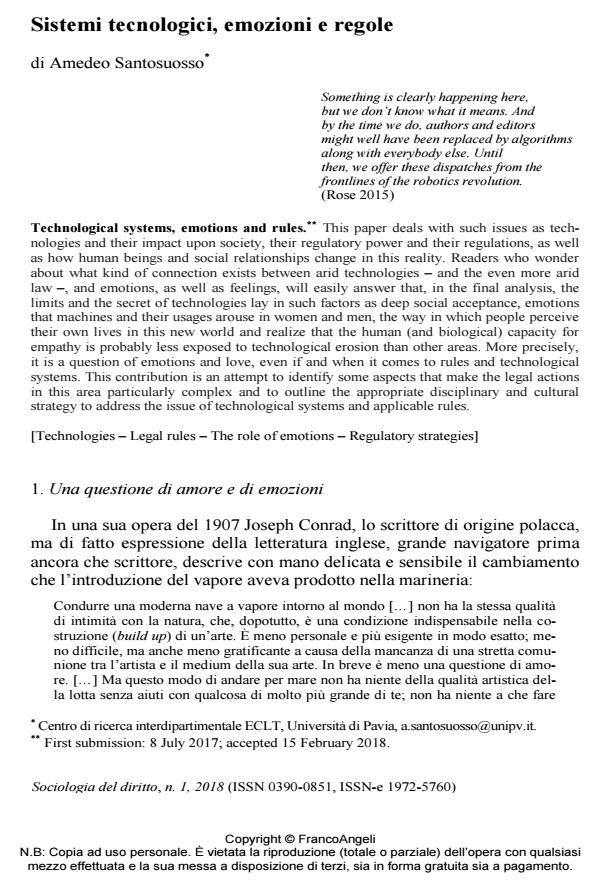Technological systems, emotions and rules
Journal title SOCIOLOGIA DEL DIRITTO
Author/s Amedeo Santosuosso
Publishing Year 2018 Issue 2018/1
Language Italian Pages 24 P. 29-52 File size 314 KB
DOI 10.3280/SD2018-001002
DOI is like a bar code for intellectual property: to have more infomation
click here
Below, you can see the article first page
If you want to buy this article in PDF format, you can do it, following the instructions to buy download credits

FrancoAngeli is member of Publishers International Linking Association, Inc (PILA), a not-for-profit association which run the CrossRef service enabling links to and from online scholarly content.
This paper deals with such issues as technologies and their impact upon society, their regulatory power and their regulations, as well as how human beings and social relationships change in this reality. Readers who wonder about what kind of connection exists between arid technologies - and the even more arid law, and emotions, as well as feelings, will easily answer that, in the final analysis, the limits and the secret of technologies lay in such factors as deep social acceptance, emotions that machines and their usages arouse in women and men, the way in which people perceive their own lives in this new world and realize that the human (and biological) capacity for empathy is probably less exposed to technological erosion than other areas. More precisely, it is a question of emotions and love, even if and when it comes to rules and technological systems. This contribution is an attempt to identify some aspects that make the legal actions in this area particularly complex and to outline the appropriate disciplinary and cultural strategy to address the issue of technological systems and applicable rules.
Keywords: Technologies, Legal rules, The role of emotions, Regulatory strategies
Amedeo Santosuosso, Sistemi tecnologici, emozioni e regole in "SOCIOLOGIA DEL DIRITTO " 1/2018, pp 29-52, DOI: 10.3280/SD2018-001002